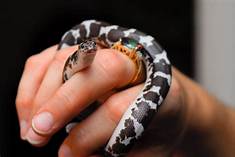Is the Pet Sematary Real?
The Pet Sematary, a fictional graveyard in Stephen King's novel of the same name, has captivated readers and intrigued horror enthusiasts for decades. While the novel is a work of fiction, the idea of a place where buried pets are said to come back to life has roots in real-world traditions and beliefs.

Pet Cemeteries: A Cultural and Historical Context
The concept of pet cemeteries predates the publication of King's novel. Throughout history, various cultures and societies have established designated burial grounds for animals, particularly beloved pets.
In ancient Egypt, cats were considered sacred animals, and their mummified remains have been discovered in elaborate tombs. In Victorian England, pet cemeteries became popular among wealthy families who wished to provide their deceased companions with a respectable resting place.
The Inspiration Behind the Pet Sematary
Stephen King's inspiration for the Pet Sematary came from a real pet cemetery near his home in Orrington, Maine. The cemetery, located in a remote wooded area, was a place where local residents buried their deceased pets.
King's fascination with the pet cemetery and the surrounding folklore led him to create the fictional Pet Sematary in his novel. However, the supernatural elements and the terrifying events that unfold in the story are entirely fictional.
The Allure of the Pet Sematary Myth
The idea of a place where buried pets can be brought back to life, even if in a twisted and monstrous form, has captured the imagination of readers and horror fans alike.
The Pet Sematary myth taps into our deep emotional attachment to our beloved animals and the profound grief we experience when they pass away. The notion that there might be a way to bring them back, no matter the consequences, holds a certain allure, even if it is ultimately a tragic one.
Cautionary Tales and Lessons Learned
While the pet cemetery in King's novel is fictional, it serves as a cautionary tale about the dangers of tampering with the natural order of things.
The story explores themes of grief, loss, and the consequences of trying to control death. It warns against the temptation to resurrect loved ones or pets, as it can lead to disastrous and unforeseen outcomes.
Declaration: All article resources on this website, unless otherwise specified or labeled, are collected from online resources. If the content on this website infringes on the legitimate rights and interests of the original author, you can contact this website to delete it.





